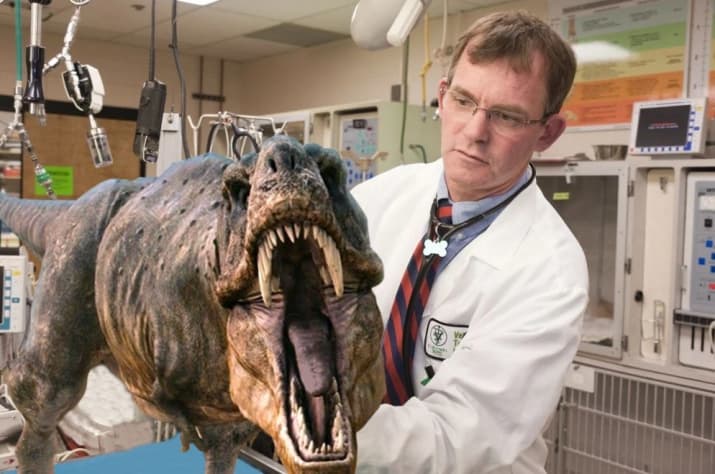
We couldn’t resist having a little fun with the science behind the new “Jurassic World: Fallen Kingdom” movie.
As Jeff Goldblum’s character says in the first film of the series, “Jurassic Park,” “Your scientists were so preoccupied with whether they could, they didn’t stop to think if they should.”
Prompted by a discussion on National Public Radio’s “1A” about the actual science behind the fantasy, we wondered about the challenges dinosaurs would present to our veterinarians.
If real-life scientists do succeed in bringing dinosaurs back to life, hospital director Dr. Tim Hackett and his trusty sidekick Dr. Matt Johnston, chief of the Avian, Exotic, and Zoological Medicine service, will be ready to care for them.
“Since most dinosaurs are lizards and closely related to birds, we’d probably handle through Exotics, like we do the big carnivores from local zoos and rescues,” Hackett told social media manager Ashley Manweiler. “These cases put our ‘under one roof’ philosophy to the test. They always require anesthesia, but we often need to pull large and small animal specialists in depending on the problems we find.”
Find the answers to this and other questions, such as “how much anesthesia does a T. rex need?” in our BuzzFeed article “If CSU’s Veterinary Teaching Hospital Treated Dinosaurs.”